How to plant beets after thinning?
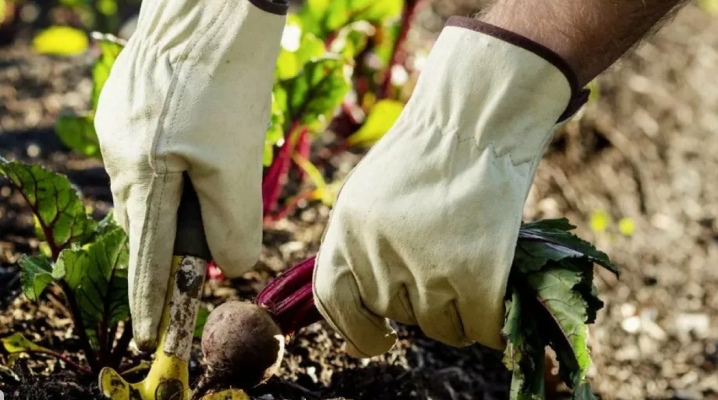
In this article, we will consider the process of thinning beet seedlings. We will present the technologies of thinning, picking and subsequent selective transplantation. We will also talk about an integrated approach to the subsequent care of plants.
How to thin out correctly?
Beetroot is a valuable crop with useful properties and excellent taste. Strengthens the walls of blood vessels, lowers blood pressure, normalizes metabolism, and also has many other beneficial properties. It is successfully used in cooking. That is why getting a decent harvest of beets is an important task for a gardener. In this case, the necessary stages are the thinning of thickened seedlings and the subsequent transplantation of some of them.
The transplantation of some seedlings is also due to the peculiarities of seed germination in this culture. Several seedlings germinate from one seed. In this case, it often happens that the seedlings have risen too densely. Subsequent thickening does not leave the tubers room for full growth and development.
There is a certain technology of thinning and replanting for the best result. When planting beets in open ground, after the appearance of the first full-fledged leaves, the seedlings should be thinned out. The dug out neighboring plants should then be transplanted to a separate bed. Beets should be thinned in two, and sometimes in three passes. The first time you need to start the procedure after the appearance of the first full-fledged leaflet.
The soil must be moist so that the roots are well separated and not injured. Direct sunlight is also undesirable.
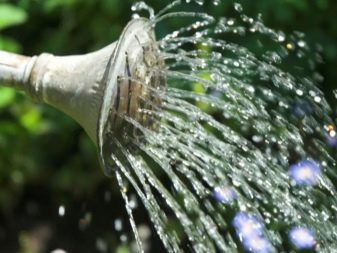
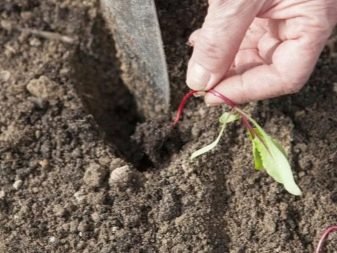
It is better to thin out in cloudy weather or use a special canopy. Plants will wilt when exposed to direct sunlight and are more difficult to take root. Between the shoots it is better to leave a distance of 3-4 or 7-8 cm. The second thinning is done 2-3 weeks after the first. Moreover, there should be 4-6 leaves on each beet. Leave at least 15 cm between the plants. Do not delay. This can significantly reduce yields.
Prepare planting material from the dug out plants, which can be planted in a separate bed. If there is no space, sprouts can be placed along the edges of the garden bed next to other crops. Saplings need picking. It consists in pinching the tip of the root. You should dive with a special pointed stick, which in French is called piquet. For this reason, this method has received the appropriate name.
For this purpose, you can use a spoon. It is necessary to insert the tool at the correct angle into the ground, which will lead to a spine pick. You can shorten the spine by 25-30 percent. The root will then not stretch inward, but will grow in breadth, which will provide a weighty root crop. This will contribute to a full harvest, and the plants will be less sick.
The transplantation gives an impressive result: the dug-out plants form large root crops in the future.
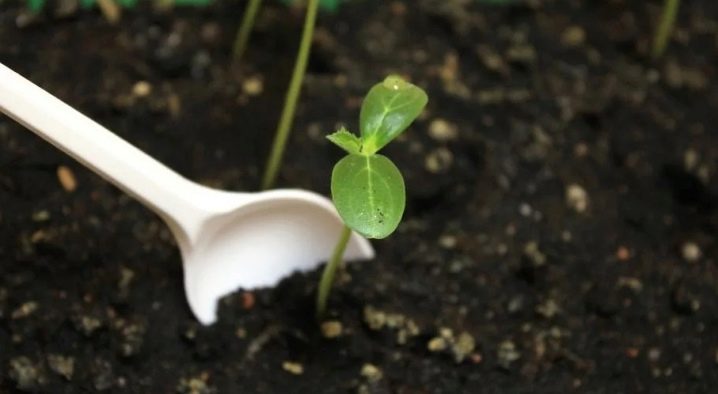
Transplant timing and technology
After thinning, the beets should be planted. To obtain a rich harvest, a certain technology is used. Beet transplanting should be started in June. It is better to choose the timing based on the lunar calendar. Transplant seedlings should be in cloudy weather, placing them in moderately moist soil. In this case, the sprouts take root better and receive further development.
The procedure for thinning and replanting is carried out for most varieties of beets. However, it so happens that in the seeds, along with the food, there is a fodder variety of a vegetable. Its shoots should be separated from the red beets and planted separately to organize planting by purpose. Food varieties are successfully used in cooking, and fodder beets are grown to feed farm animals.
Before transplanting, a suitable area for beets is selected. The culture grows well on fertilized loamy and sandy loam soil with an acidity index of 6-7 pH. At significantly high and low values, yields will fall, plants may die. It is recommended to feed the soil before planting beets.
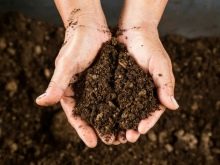
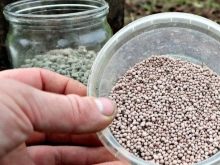

The following fertilizers are applied to the prepared area (per 1 m2): superphosphate - 40 g, potassium sulfate - 15 g, ammonium sulfate - 30 g, ammonium nitrate - 20 g. The crop is sensitive to a shortage of boron and needs to be fed annually at the rate of 3 g per 1 m2. Manure is applied only once every 2-3 years, and then under the previous vegetables. With an excess of this fertilizer, the yield falls, and the vegetative part increases sharply. The soil should be loosened 30 cm, weeds removed and watered. It is better to prepare the earth in advance in the fall.
Then proceed to the direct planting of the plants remaining after thinning. You need to carefully dig holes for them. To do this, you can use a garden scoop, a flat stick. Gloves should be worn on hands to avoid cuts and abrasions from sharp stones or glass. It is necessary to leave a considerable distance between the tubers (from 15 cm) in order to ensure their growth in width and obtain a decent harvest. Planting depth should correspond to the length of the planting root. After planting, it is worth re-watering. If the plant does not take root, it can be replaced with a new one from the mother's garden. In terms of transplanting, beets are quite unpretentious and quickly take root in a new place.

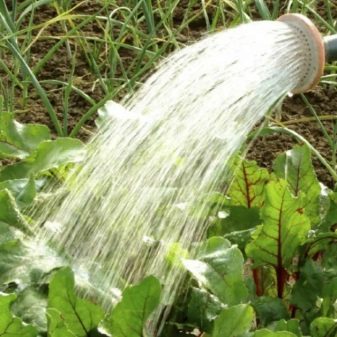
Helpful hints
Subsequently, it is necessary to provide proper comprehensive care for the beets that have been thinned and for the one that has been transplanted. The vegetable culture is periodically watered. She needs a certain temperature regime. In the initial period of the formation of roots and shoots, the temperature should be + 15-18 degrees. During the ripening of root crops, the optimum temperature will be + 20-25 degrees.
In case of cold snaps, the beets must be covered with a greenhouse. It is more convenient to use a structure with a covering material on the arcs. It is easy to install and remove. A well-lit area should be chosen for cultivation. When shaded, the shoots will stretch and begin to weaken. However, at the initial stage, the seedlings should be shaded, which will ensure their strengthening and prevent them from drying out under the scorching rays of the sun. It is also necessary to monitor the appearance of weeds in the beds. They absorb nutrients and moisture that are valuable to plants, thereby reducing the yield. Weeds should be weeded. Do not sprinkle beets like potatoes.
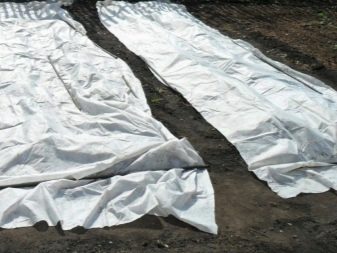
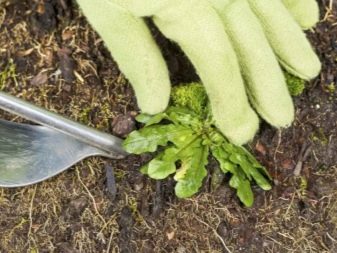
As the vegetable grows and ripens, fertilizing is carried out. This is necessary so that the roots are large and have pleasant taste. At the stage of growing tops, nitrogen fertilizers should be applied. At the stage of root formation, the plant needs phosphorus and potassium. To improve the taste characteristics of the crop and give it sweetness, sodium nitrate or table salt should be added.
Also, the regulation of excess acidity in the soil should be attributed to important recommendations, since beets do not tolerate too acidified soils poorly. To reduce acidity, plants should be regularly watered with an ash solution at the rate of 1 glass per bucket of water. It can also be used dry, such as sprinkling soil between rows. It also repels pests well.
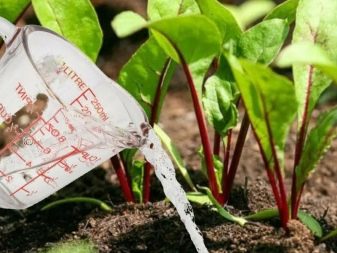
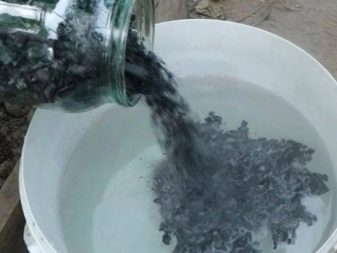
Possible problems
When transplanting beets and subsequent care, certain problems may arise. They are expressed in poor plant growth and development. In this case, the plants get sick. These difficulties are due to inappropriate cultivation conditions. Most often this is due to an excess or shortage of fertilizers, shading, waterlogging and waterlogging of the site, or lack of proper watering.
One of the problems will be that the leaves often turn red. This manifestation is explained by the lack of potassium in the soil. Hardened fruits determine boron deficiency. A frail and dull tops at the beginning of the growing season indicates a low nitrogen content. With waterlogging and excessive shading, gardeners are often faced with the fact that the tops are dead, wilted and stretched out, and the tubers are rotten and not formed.
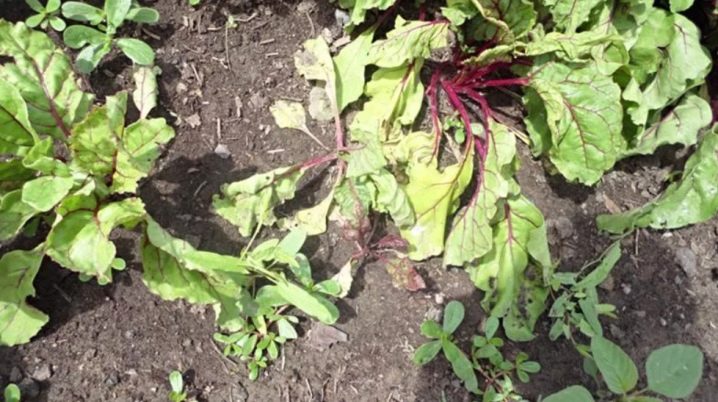
There are a number of possible problems that summer residents face. This is a cold snap, and pests, and inappropriate soil acidity. When identifying these problems, you should eliminate their sources, improve the environment and make sure that natural components provide the growth and development of plants in the required combination and balance.
Thus, proper thinning, transplanting and subsequent care play an important role in increasing beet yields. Beets are a rather unpretentious crop. Adhering to a set of norms and conditions for planting and growing it, you can achieve impressive results and get a rich harvest with excellent taste.
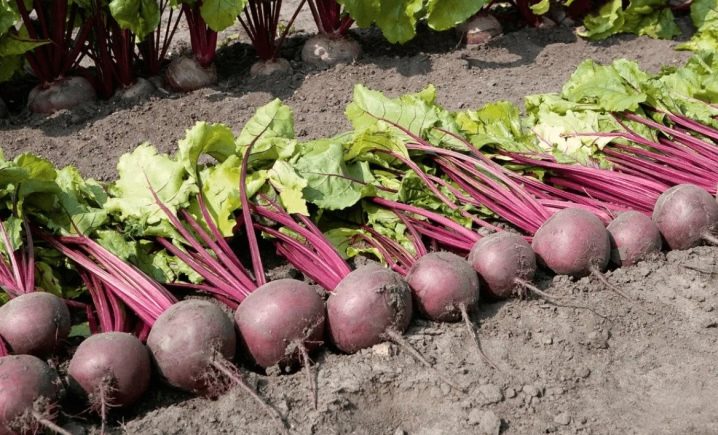












The comment was sent successfully.